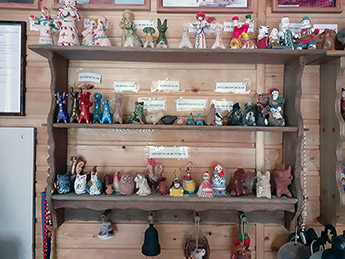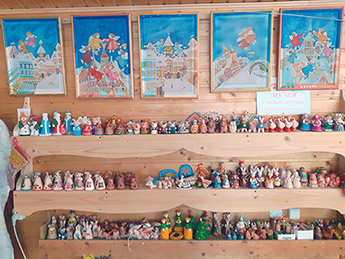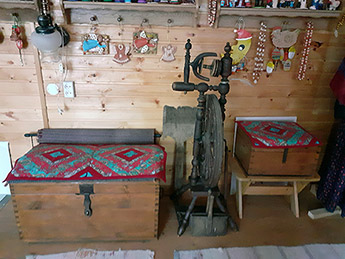The Museum of Clay Toys “Voronezh Zamanka”
The Association of Private Museums of Russia welcomes a new participant from the Voronezh region — the Museum of Clay Toys “Voronezh Zamanka”, the founder and owner of which is Olga Gubanova.
I’ve been making clay toys for 7 years, 6 of which I’ve also been teaching the craft to kids and teenagers. In 2015, the Voronezh Zamanka art collective was established on the basis of Borisoglebsk school No. 6, and later I continued the work in the OOI BGO Ravenstvo (Public Organization of Persons with Disabilities and Parents of Disabled Children of the Borisoglebsk city region) working with children and teenagers with disabilities. Since 2016, I’ve been actively participating in folk art festivals, fairs, and contests, meeting masters, buying their toys, my own toy collection was growing as well. Although our town is a trading town with a rich history, there were no clay toys on display in the local history museum, and the Hall of Arts and Crafts in the Art Gallery ceased to exist by this time. Therefore I developed a desire to create a house for clay toys, a place where we could model and paint them, tell their stories, in other words, play. One of the first people to revive the art of clay toys in the Voronezh region was a local master Galina Ivanovna Arefyeva, National Craftsman. In her book Kudykina Gora, are not only tales and nursery rhymes about toys, but also her family stories and, of course, the photos of toys. In this book I read the expression “Voronezh zamanka”(“bait”) for the first time, that’s how they called children toys in our region in the old days. So I decided to name the museum after it. To create the museum, we had to add a second story to the house, a room of 21 square meters that became an exhibition hall. Along with the toys, ancient costumes (two authentic folk clothes for women from the times of our grandmas) and household items, including a spinning wheel, carders, a comb, a washboard, milk jugs, etc., found their place in the museum. But the main characters are toys.
My museum is not just a place to exhibit toys on shelves but also a studio with a two-meter-long table, where my guests and I work, where toys are dried and tempered. Along with making toys, I started to study the craft history and collect material on places in our region where toys were made in the past and are made in the present, the toymakers of the Voronezh region, and the traditional toy crafts of Russia. As a result of the research, I published articles in several scientific journals and created a Map of Clay Toy Centers in the Voronezh Region. The collected material also determined the topic of the museum tours. But the most engaging way to visit the museum, both for kids and adults, is a workshop. I try to base my lessons on the upcoming national, religious, or state holidays. Preschoolers can attend my play-based classes with elements of rituals or travel with the clay toys through the fairy tales of G.I.Arefyeva. I also host themed exhibitions: “Clay Toys Christmas Decorations”, “Easter and Easter Souvenir”, “Christmas is coming”, etc. During conferences and seminars on folk culture, I exhibit the toy collection in the City Children’s Library.
Clay toys, displayed on the shelves, occupy most of the place in the museum: traditional and designer toys from all over Russia, toys made by Voronezh craftsmen and by me
(the majority are mine). Above the shelves, there are portraits of some folk artists of the Voronezh region and the Map of Clay Toy Centers in the Voronezh Region. My favorite toys are the landladies, they are wearing poneva-style outfits and traditional headpieces of our region: soroka, bonnet, and kichka. Many female images are based on this one, including the Maslenitsa Doll Avdotyshka, the Easter Lady, Vesnyanochka, the Trinity Doll, water carrier, townswoman, etc. The museum presents a large number of bells, whistles, beads, Christmas toys, and plaques. My works in other techniques, such as cold batik paintings depicting folk festivals and rag dolls, are also on display. Among the exhibits are a few antiques: a spinning wheel, carders, a comb, chests, milk jugs, homespun strips of carpet, and two folk costumes from the Voronezh region. All this helps to boost communication and creativity in the museum.”
Calligraphy is the flower of a man′ s soul.









